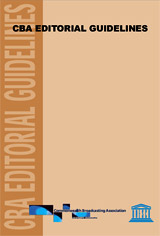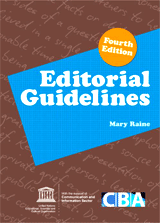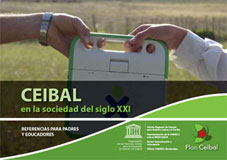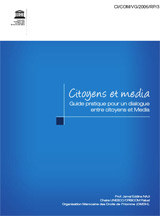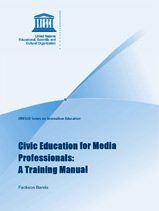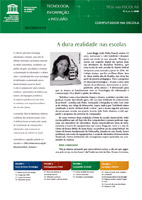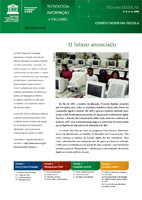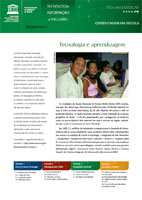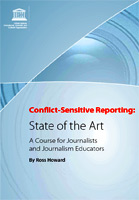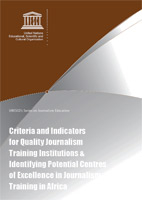A collection of about 1300 works on astronomy in three languages (Turkish, Persian and Arabic) held in the Library of Kandilli Observatory and Earthquake Research Institute at Bogaziçi University in Istanbul.
Publication year: 1996
Prepared by the Commonwealth Broadcasting Association (CBA) with support from UNESCO, the Guidelines presented in this publication are an attempt to help broadcasters find their way through the maze and help them identify and adopt good practice that ensures free and fair coverage.
Publication year: 2004
UNESCO supported the Commonwealth Broadcasting Associations initiative to publish an updated version of the Editorial Guidelines, which are designed to help broadcasters identify and adopt good practices that ensure sound coverage by the media that operate freely and fairly.
Publication year: 2010
This guidebook for parents and educators is published under a UNESCO supported project, CEIBAL, which aims at providing all primary school pupils in Uruguay with a notebook to be used both at school and at home.
Publication year: 2008
Prof. Jamal Eddine Naji, a well-known expert in communication and media, wrote this book to describe the context of certain French-speaking countries in Africa and the Maghreb and to recommend them good practices taking into account their identities and particularities.
Publication year: 2006
The publication focuses on the underlying nexus of democracy, development and the media based on the fundamental principles of democracy and human rights that lie at the heart of UNESCOs mandate.
Publication year: 2009
It is with the objective of contributing to the improvement of communication training in Africa that UNESCO has developed the current model curricula which, as the name implies, can serve as benchmarks or standards for training and preparing communication practitioners on the continent.
Publication year: 2002
This Handbook aims to show that ordinary people, even non-technical rural folk, can plan, set-up, manage and produce radio programmes by themselves with a minimum of dependence on outside help.
Publication year: 2001
Computer in school is the third volume in the series Technology, information and integration, which focuses on the contribution of new technologies to social development in Brazil. This volume is composed of three folders.
Publication year: 2008
Computer in school is the third volume in the series Technology, information and integration, which focuses on the contribution of new technologies to social development in Brazil. This volume is composed of three folders.
Publication year: 2008
Computer in school is the third volume in the series Technology, information and integration, which focuses on the contribution of new technologies to social development in Brazil. This volume is composed of three folders.
Publication year: 2008
A practical guide to procurement of technical equipment for community media institutions
Publication year: 2004
Written by Ross Howard, who teaches journalism at Langara College in Canada and is the President of the non-profit Media and Democracy Group, the Curriculum provides guidance to a better understanding of conflict and conflict resolution and the news medias role.
Publication year: 2009
Following the COMNET IT/UNESCO Global Survey on On-line Governance published in 2000, the Commonwealth Network of Information Technology for Development (COMNET-IT), in association with and with the financial support of UNESCO, has developed national profiles detailing current status and developments in this area.
Publication year: 2002
This guide to technical parameters of community radio in India was produced for potential community radio operators, taking into account the intention of the Government of India to establish 4000 community radio stations by 2008.
Publication year: 2007
The report maps the capacity and potential for excellence of almost one hundred journalism schools across Africa, highlighting the development challenges and opportunities of African journalism institutions and identifying specific areas for support from development partners.
Publication year: 2007
Cultural diversity is seen as part of humanity's common heritage, which, as a source of exchange, innovation and creativity, is as essential for humankind as biodiversity is for nature. It should therefore be protected for the benefit of both present and future generations and be considered as a basic human right.
Publication year: 2003






